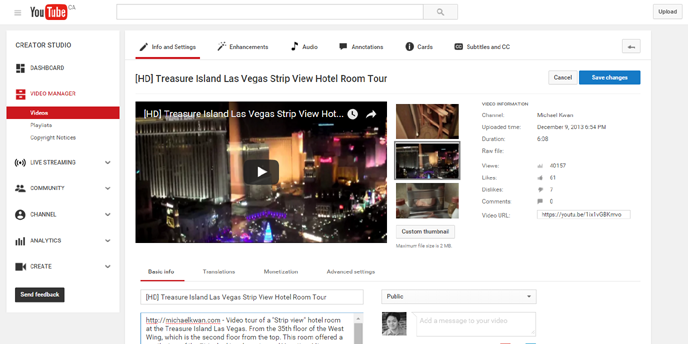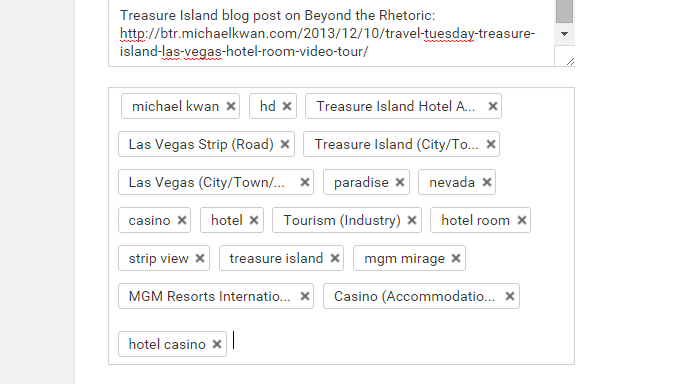It’s a statistic that keeps getting thrown around and it’s one that you would really be foolish to ignore. The second most popular search engine on the Internet today, trailing behind only the almighty Google itself, is YouTube. More people are spending more time watching videos on YouTube than ever before and regardless of the kind of business that you’re in, you really should be thinking about how you can maximize this opportunity.
I’ve written about YouTube on several occasions on this blog, like why you should enable featured content and consider going beyond basic monetization to maximize your profits. None of that really matters all that much if nobody is watching your videos, though, and since YouTube really does act like a search engine (it’s still powered and owned by Google, after all), you can approach it with some similar SEO principles.
It Starts with the Title
It’s true that the titles to your blog posts don’t necessarily have to be keyword rich anymore and you may be better off writing titles that are more “clickbait” worthy in order to attract attention through social media sharing. On YouTube, a similar mindset generally applies, except keyword-rich titles still tend to perform better.
This doesn’t mean you should go about stuffing keywords into an extra long title. That could have the exact opposite effect. Remember that longer titles will get truncated, so you’ll want to make sure that people know what they’re clicking on. Short and descriptive is the way to go.
A Descriptive Description with Keywords
Let’s use the example of my hotel room tour at Treasure Island Las Vegas. It has been one of my more popular videos these last couple of years and most of those views are coming from random people on YouTube looking for more information about that particular hotel.

As a general rule of thumb, blog posts should have a certain amount of “meat” to them in order for them to appear as “useful” to Google. Experts generally recommend at least 300 or 350 words, if not more. While you don’t have to go quite that far with YouTube, one-liner descriptions generally just won’t do.
Take advantage of the space, even if the actual viewers never click on the “show more” link to read your whole description. That’s because what you write in your description is taken into account for SEO purposes by YouTube and Google. Be useful, so people (and bots) know what to expect. Don’t overdo the keywords, but you should include your target term at least once near the beginning and possibly near the end too. It worked for me.
Your File Name Does Matter
Here’s something that far too many people forget about and many people discount as being not very important. It only takes you a couple of seconds to change the file name to the video you’re uploading, so change it from something generic like VID5486.avi to something more relevant like treasure-island.avi.
Why? The same underlying principle applies to when you use images on your blog. When you have a picture with a file name like IMG_9374.jpg, we have no idea what it is unless we actually see it. If the same picture is named cute-kitten.jpg, we have a much better idea of what it is. The impact may not be terribly substantial, but it’s there and the effort is virtually nonexistent.
Leverage Those Tags
Using too many tags with all of your blog posts can get ugly and cluttered very quickly. In the case of YouTube, this is far less of a problem.

Below the video description area, you have the opportunity to name as many tags as you want. What’s useful here is that as you start typing out your keyword or keyword term, YouTube will oftentimes suggest how to complete it. I started typing “Treasure Isl…” and it completed it as “Treasure Island Hotel And Casino (Casino)” automatically.
Take advantage of that, as it will provide further clarity to YouTube about the contents of your video and help it rank better for those terms.
The First Steps Are the Hardest
This might not sound fair. This might sound like the same conundrum new graduates face as they go on the job hunt, only to find that every position requires five years of experience, even though they can’t get that experience without getting a job in the first place.
On YouTube, getting the first thousand or two thousand views on any given video is going to be the hardest if you don’t already have an established subscriber base who fervently watch your every upload. When you only have a couple dozen or even a couple hundred views, YouTube assumes you don’t matter too much and this has a negative impact on your search rankings.
After hitting a couple thousand views, though, you’ll find that you start to rank a lot better. This is because more viewer data has been collected and your video has demonstrated its relative popularity and relevance. It can snowball from there, since it’ll generally rank higher now too.
As with so many other things in life, success on YouTube breeds more success on YouTube. Getting ranked is just one part of the equation and it’s a continually-moving target to boot. Keep at it. Be consistent. And the views will come.
